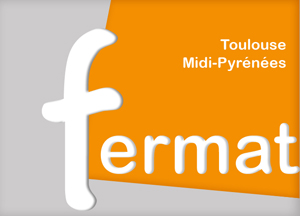Flow structure, mixing, flame stabilization and emissions of a double swirl coaxial injector CH4/H2/air
Sylvain Marragou
Wednesday, May 17 at 10:00 am – Amphitéâtre Nougaro
Abstract
Developing loping hydrogen fueled burners that meet stringent conditions of aeroejet engine gas turbines is challenging. In this work, a dual swirl coaxial injector concept is investigated at atmospheric conditions. The structure of the flow, mixing, flame stabilization and pollutant emissions are scrutinized. This co-axial injector operates with hydrogen injected in a central tube and with air or a CH₄/air mixture in the annular channel. For a fixed swirl level in the annular channel, the swirl level in the hydrogen injector, the recess distance of hydrogen injection with respect to the
chamber backplane and the hydrogen injection velocity are identified as the main parameters controlling flame stabilization. Conferring swirl to the hydrogen stream is identified as a necessary condition to lift H₂/air flames. A small recess distance considerably enhances the range of operating conditions for which the flame is lifted. Particle Image Velocimetry (PIV) measurements indicate that the swirled hydrogen central jet expands radially right at the injector outlet, cutting the low velocity zone in the wake of the injector lips, explaining the observed necessity of an inner swirl motion to lift the flame. Raman scattering is used to infer the gas concentration profiles at the burner outlet. Conferring swirl to the hydrogen stream greatly
enhances mixing in the first millimeters right out of the central hydrogen injector. Augmenting the hydrogen injector recess distance favors partial premixing before combustion. The velocity ratio between the central and annular stream and the central jet angle are shown to drive mixing and a physical-based model is derived to scale a mixing progress parameter.
In reactive conditions, PIV shows that thermal expansion of the gas across the flame substantially increases the spreading angle of the swirled jet leading to lower recirculation velocities. When the flame is anchored, the presence of heat release right at the outlet of the central injector leads to a decrease of the diameter of the central recirculation zone at the outlet of the annular injector. Thermal boundary conditions along the com- bustion chamber, gas temperatures at several locations in the flow and pollutant emissions are also analyzed. NOx emissions decrease when the flame is lifted due to a better mixing consecutive to the increased distance between the hydrogen injection outlet and the flame. They drop with the global equivalence ratio and drop for increased thermal powers. A scaling law based on the adiabatic temperature and the residence time of burnt gases in the combustion chamber enables to collapse the data for lifted flames. Finally, a predictive model based on an edge flame displacement speed is developed to describe the physical
mechanisms leading to flame re-anchoring. It considers that, for an initially lifted flame, if a zone with a flammable mixture and with velocities lower than the triple flame speed exists from the flame leading edge to the injector lips, the flame will re-anchor to the injector. With a limited set of experimental data taken in cold flow conditions, this model is able to predict the transition from lifted to anchored flames for all operating condition hese experiments and models open the path to the optimization of hydrogen injectors in swirling flows.





